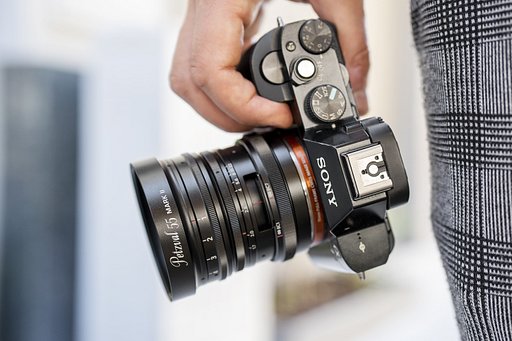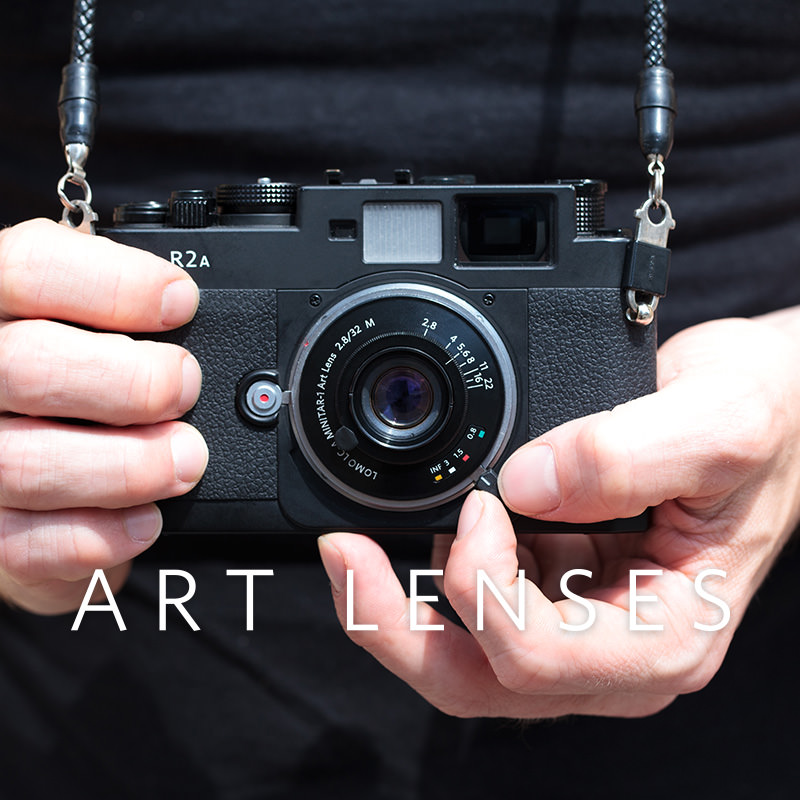An Interview with Lucas Simões: Geometry and Fascination
2 10Lucas Simões work shows known ordinary objects transformed, modified in ways that we almost don’t recognize it. Lucas has a range of admirable work, each interesting and intriguing in their own way. In his work with photography, he forces us to change our perspective, the way in which we visualize an artwork. All that remains of photography is as a reminder of what we know, but exchanged for something new, for geometric shapes, taking us away from a traditional portrait, but leading us to an exciting place.
His design and architectural background leave a very clear trace throughout his photographic work and he describes the role of architecture in his art like this:
“In architecture, which is part technical and part human, the drawing is more than just a drawing, it’s the intention that something concrete will be created through the process of construction. This perspective has influenced my approach from the process of drawing to the constructive process of my work, resulting in interferences, sculptures, and installations. As I find the materiality of support important, this process of approaching each material is done through experiences, for example in burning, cutting, distorting, blurring, diluting, which in extreme cases, can destroy the object. In all my experiments, done with burning, creating distortion, the intention is to intervene in objects or images that carry meaning, and by doing so, create a new representation that oscillates between beauty and strangeness, movement and depth. There is a certain perversion to it, to modify the meaning, the strange fascinates me, and make it become beautiful is even more interesting.”
Photos are changed in your art to be part of something bigger. When you take pictures, are you always thinking about the result or do you take pictures without knowing exactly what you’ll end up doing with them?
It depends on each workpiece, in some cases the images aren’t mine, like in “ficções” and “verdade é uma colagem contínua”, and in other cases, like in “desretratos” and “desmemorias”, the act of shooting is part of the work process - and these two series are the only ones where I photograph.
Quase-cinema and “Ficção” were made in similar ways. What are the parallels to your series "quase-cinema" and what are the major differences between them?
"Ficção" is a "quase-cinema", what changes are the development of the work. I named the first series of photographs stitched on wooden railing "quase-cinema" (2010). They were pictures of a trip I made, and in many contexts seemed like movie scenes to me. They were elongated and repeated creating the final effect. When I gave the title to the series, it was a direct relationship to the movies, the frames, the movement of the image and not to the work of Helio Oiticica and Neville D`Almeida, although it is likely that I have read about the quase-cinemas by Oiticica and I kept this term stored in my memory.
However, “ficções” and “verdade é uma colagem contínua” are two series of quase-cinemas that are offshoots of these early experiments - each with a specific theme, exploring the conceptual possibility and plastic support that I had created. In “ficções” I searched for images of distant and inaccessible places, such as some isolated islands in the Pacific. From the images I found from each place, I took apart the original landscape logic through digital manipulation, altered their colors and finally geometrically blacked out portions of them, creating blank spaces, which in the finished work appear as volumetric repetitions in this landscape, symbolizing inaccessible in real representation.
Moreover, in fact, it is a continuous bonding I appropriate buildings pictures whose monumentality is a reflection of the ideology behind its commissioning. With these images, I create a landscape where I place buildings side by side made with intentions and very different concepts, some of them already in ruins. For example, nationalist buildings from Former Yugoslavia alongside pavilions from the Serpentine Gallery, alongside to communist buildings, alongside iconic projects of modern architecture such as Le Corbusier and Frank Lloyd Wright the next to anonymous architecture, creating a landscape built on utopias. And this research has resulted in very long quase-cinemas, some 4 meters long, where the viewer must walk along the work to be able to observe all the images it contains and this movement is what brings potential to the work.
Is the question of which camera you use and if it’s digital or on film important for your work?
In the case of “desrerratos or desmemorias”, I used digital because it is necessary to take many pictures in a sequence and that would not have been possible with an analogue camera. However, one of the first quase-cinemas were made with an analogue camera, or even with used films founded on flea markets. In that sense I am very practical, I believe that every medium justifies its concept and its ending.
As your work with photography is very abstract, on what do you focus when you’re shooting? When is the right moment to press the shutter?
As I said before, the only work where I really did shoot were the portraits and on this case, I had to pay attention to the basics which are focus and light, and try not to disturb my subject, but sooner or later we’d end up laughing together.
How much time do you need for an art piece as seen in your series “destratos” and why did you choose this name?
The concept of an art piece always needs a lot of time; I can’t tell how long it took me. The first series was “desmemorias” which came from personal experience. On a trip, I met friends who I haven’t seen in a long time, people I lived with when I used to study architecture in Milan. We met in a bar and it was interesting to see that even knowing that we knew each other really well and that we were really intimate, we had to get to know each other again because we were already other people. Later, when I went to the bathroom in the bar, the glass above the sink was huge but it was broken in a way, that even I couldn’t really see myself in the reflection. And I kept that in mind and then these ideas popped up. (But the production of one of these pieces takes about a month)
What would you say are the differences between “desmemorias” and “desretratos”, which use the same technique? Also, did you create the pieces based on the conversation you had with the subjects? Did the content of the conversation influence you in your artistic process?
In “desmemorias”, which was the first series – based on that experience I told you about, I got in touch with people I was once very close to and lost contact, and asked for a meet-up and told them I wanted to take their pictures. So in this case, the portraits were made during a conversation. The patterns for the clippings for this series are normally very geometric, but without a clear repetition, as if at some point the construction of this pattern loses its logic, which for me, reflects this situation to meet someone you were close to and realize it’s another person – the image you had of this person is not the same anymore, the “portrait” is broken.
After that, within “desmemorias”, I decided to take pictures of people I didn’t know yet to see if even when you meet somebody new, there is a need to put some kind of label, like a personal pattern. And then I started “desretratos”, which was influenced by the work of a friend, Gui Mohallem. At the time, he was working on “ensaio para a loucura” (“rehearsal to madness”) and asked if I wanted to be part of it. I think this process mixed up with what I was working on at the time I came up with “desretratos”, which is a summary, the impossibility to make a portrait, which is to be the same this as creating mystery.
In the series where you burn the photos, what makes you choose them the pictures? What is the mental process behind this project? Why didn’t you use photos that you have made?
When I working on these, I was also working a lot with intervention in media that already carried a meaning, such as maps, books, photographs etc., and the research was about adding a personal look to something that has been already reproduced on a large scale. With the burned photos, I wanted to work with images as sensations, in the same way as with colors but more abstract, as if a photo catalogue was a color catalogue or a sensation catalogue. And based on that, I was wondering what a physical intervention (which didn’t use pigments) could generate on these images. There were many experiences of dissolving, boiling, cutting etc., but in this particular research, the fire was what brought the best result.
What new projects are you working on? What are your current exhibitions?
Yes, I am taking part in the exhibition “jogo de forças” which is located in the Paço das Artes in São Paulo, and in an exhibition from Brazilian artist in Austin, Texas, called “Obras”. I am also preparing a solo project for the SP-Arte in April.
Which one of your own art pieces is your favorite?
Tough question… in the end, the best one is always the one yet to come, hehehe.
What tips or advice do you have for our community?
For me, analogue photography offers a temporal experience which is important for creative work. To not be immediate and to have a slower response, less controlled is something you shouldn’t lose in creative progress.
If you want to learn more about the artist and his other work, make sure you check out his website.
2016-05-13
#people













































2 Comments